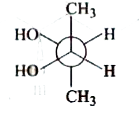Which of the following molecule is theoretically not possible ?
SF4
OF2
OF4
O2F2
The correct Answer is:C
To determine which of the following molecules is theoretically not possible, we will analyze the given options one by one based on their hybridization and electronic configurations.
1. Analyze SF4:
- Sulfur (S) has an electronic configuration of 3s² 3p⁴.
- In SF4, sulfur can undergo hybridization to form sp³d hybrid orbitals.
- The structure of SF4 is based on a seesaw shape due to the presence of one lone pair and four bonding pairs.
- Since sulfur has d-orbitals available (being in the third period), it can expand its octet and accommodate four fluorine atoms.
- Conclusion: SF4 exists.
2. Analyze OF2:
- Oxygen (O) has an electronic configuration of 2s² 2p⁴.
- In OF2, oxygen forms two sigma bonds with fluorine atoms and has two lone pairs.
- The hybridization of oxygen in OF2 is sp³, as it involves four orbitals (2 bonding + 2 lone pairs).
- Conclusion: OF2 exists.
3. Analyze OF4:
- Oxygen, as previously mentioned, has an electronic configuration of 2s² 2p⁴ and does not have d-orbitals available for hybridization.
- To form OF4, oxygen would need to accommodate four fluorine atoms, which would require it to expand its octet.
- However, since oxygen lacks d-orbitals, it cannot undergo the necessary hybridization to form OF4.
- Conclusion: OF4 does not exist.
4. Analyze O2F2:
- O2F2 has a structure similar to H2O2, where each oxygen atom is bonded to one fluorine atom and has two lone pairs.
- The hybridization of each oxygen in O2F2 is sp³, which is feasible as it involves four orbitals (2 bonding + 2 lone pairs).
- Conclusion: O2F2 exists.
Final Answer:
Based on the analysis, the molecule that is theoretically not possible is OF4.
- Sulfur (S) has an electronic configuration of 3s² 3p⁴.
- In SF4, sulfur can undergo hybridization to form sp³d hybrid orbitals.
- The structure of SF4 is based on a seesaw shape due to the presence of one lone pair and four bonding pairs.
- Since sulfur has d-orbitals available (being in the third period), it can expand its octet and accommodate four fluorine atoms.
- Conclusion: SF4 exists.
- Oxygen (O) has an electronic configuration of 2s² 2p⁴.
- In OF2, oxygen forms two sigma bonds with fluorine atoms and has two lone pairs.
- The hybridization of oxygen in OF2 is sp³, as it involves four orbitals (2 bonding + 2 lone pairs).
- Conclusion: OF2 exists.
- Oxygen, as previously mentioned, has an electronic configuration of 2s² 2p⁴ and does not have d-orbitals available for hybridization.
- To form OF4, oxygen would need to accommodate four fluorine atoms, which would require it to expand its octet.
- However, since oxygen lacks d-orbitals, it cannot undergo the necessary hybridization to form OF4.
- Conclusion: OF4 does not exist.
- O2F2 has a structure similar to H2O2, where each oxygen atom is bonded to one fluorine atom and has two lone pairs.
- The hybridization of each oxygen in O2F2 is sp³, which is feasible as it involves four orbitals (2 bonding + 2 lone pairs).
- Conclusion: O2F2 exists.
Based on the analysis, the molecule that is theoretically not possible is OF4.
Topper's Solved these Questions
- CHEMICAL BONDING (BASIC)BOOK - VK JAISWAL ENGLISHCHAPTER - CHEMICAL BONDING (BASIC)EXERCISE - Level 2
62 Videos
- CHEMICAL BONDING (BASIC)BOOK - VK JAISWAL ENGLISHCHAPTER - CHEMICAL BONDING (BASIC)EXERCISE - Level 3 (Passive 1)
6 Videos
- CHEMICAL BONDING (ADVANCED)BOOK - VK JAISWAL ENGLISHCHAPTER - CHEMICAL BONDING (ADVANCED)EXERCISE - SUBJECTIVE PROBLEMS
64 Videos
- CO-ORDINATION COMPOUNDSBOOK - VK JAISWAL ENGLISHCHAPTER - CO-ORDINATION COMPOUNDSEXERCISE - LEVEL 2
144 Videos
Similar Questions
Knowledge Check
Which of the following dienes is chiral?
ACH3−CH2=C=CH2BCH3−CH=CH−CH=CH2CCH3CH=C=CHCH3DCH2=CH−CH2−CH=CH2Which of the following molecules is not linear?
AO=C=C=C=OBH2C=C=OCHC≡C−C≡CHDHC≡CHWhich of the following molecules are chiral?
A B
B C
C D
D


